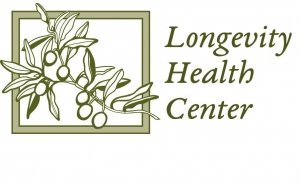Yoga as Part of a Holistic Health Plan
Yoga as Part of a Holistic Health Plan
By Lis Whitton-Frey, ND, Bio-Energetic Practitioner, Certified Yoga Instructor
What is yoga and how can we use it as an important part of a holistic health plan?
Yoga is an ancient holistic practice that includes breath control, simple meditation, and the adoption of specific bodily postures. It is widely practiced for health and relaxation. However, in our current culture, Yoga too often gets reduced to two extremes.
The first school of thought overemphasizes the physical, treating it as a trendy and effective form of exercise, while the second overspiritualizes the practice, making it for the spiritual elite. But in fact, Yoga is a holistic practice that addresses the multi-faceted nature of human beings, increasing our awareness of the present moment and releasing past emotions that can keep us stuck, and increasing our holistic health.
The five foundations of yoga, which are a very comprehensive approach to holistic health, are:
- Asana- Proper Exercise
- Pranayama- Proper Breathing
- Savasana- Proper Relaxation
- Proper diet and Nutrition
- Positive thinking and meditation
At Longevity, the majority of our focus is on detoxification and proper diet and nutrition. But the other aspects of holistic health listed above must be added by the patient to their daily life for optimal results. It is important that we do not neglect any of the other aspects of healthy living. For we cannot neglect any of the above for too long and thrive. And although we can encourage you, at the end of the day, no one else can breathe for you! No one else can connect to God for you.
But in our modern lifestyles, we are constantly exposing ourselves to stressors that can cause us to want to hold our breath (just try driving around 285 in rush hour traffic, not just once, but EVERY WORKDAY like some of you do!).
Additionally, we live in an environment that promotes hustle. There are societal expectations to continually achieve: be smarter, in better shape, healthier, prettier, thinner, richer. And while we want all good things for our patients and ourselves, we all need reminding that we deserve rest, that we deserve to just be, to recharge, to enjoy the present moment. In fact, the second regret of those interviewed on their deathbeds is that they worked too hard. Yoga is such a wonderful antidote to the stressors of modern life!
And what’s the number one regret? That they did not live a life true to themselves, but did what was expected of them by other people. Yoga can help us break this habit, too, by taking time to consistently check in with ourselves, instead of being caught up in the busyness of life, and overwhelmed by the buildup of emotions that are too many to sort. Yoga as a discipline creates a deeper connection to self, providing better health in a way that restores our nervous systems and adrenals. It allows you to release emotions stored in our bodies.
How do emotions get stored in the body?
Emotions directly impact our Autonomic Nervous System, which directly impact our bodily functions. The brain is a network of systems that registers and stores our emotions. This network includes the amygdala, hippocampus, insula, anterior cingulate cortex and prefrontal cortex. These parts of the brain are closely linked to the hypothalamus which is the center of the Autonomic Nervous System. The Autonomic Nervous System controls many things that we are not consciously aware of, such as heart rate, blood pressure, temperature regulation, and breathing.
When under stress, the emotion-based network sends signals to activate the Autonomic Nervous System and produce adrenaline and cortisol in order to turn on the survival response known as “fight or flight” (though more recently it has been recognized that “freeze” and “fawn” are also common survival responses to danger and stress). This survival response directs blood flow to muscles to get our body ready to run or do battle, and it causes our bodies to react instantly before we are aware of what is going on. This protects our bodies and increases our chances of survival.
Through the efforts of neurobiology, we now understand that when emotions rise quickly, the blood flow in the brain shifts away from the frontal lobe, the conscious thinking part of the brain, to the limbic system, which is the emotional reacting and subconscious part of the brain. The Autonomic Nervous System controls the nerve fibers that affect every area of our bodies. Studies have shown that emotions like anxiety or anger can increase tension in the back muscles of people with chronic back pain.
Although this muscle tension caused by emotional stress often takes place outside of our awareness, it can cause serious physical pain of which we are very aware. We are often not even aware of the underlying emotions causing this physical response, much less their connection to our pain!
How exactly does Yoga help?
Yoga invites us to stretch and feel into these accumulated muscle tensions. It invites us back to our bodies, back to the present moment, to release all the built up stress. The practice invites us back into ourselves. The conscious breathing techniques combined with movement, gets us out of our most primitive survival instincts, out of fight or flight, downregulating the sympathetic state and up regulating the parasympathetic state.
Stress can produce a great variety of symptoms through activation of the Autonomic Nervous System. Overactivation of the Sympathetic state can produce symptoms such as tingling, numbness, burning sensations, dizziness, tinnitus and anxiety. Activation of the digestive system can cause abdominal pain or bloating, heartburn, nausea and vomiting, diarrhea or constipation. When the digestive system is activated, one can experience pain, itching, burning and urinary frequency. Cardiovascular responses can include palpitations and a rapid heart rate. Changes in blood flow can produce migraine headaches. Freeze and Fawn responses will typically cause fatigue and/or depression.
While the sympathetic state is associated with fight or flight, also known as survival mode, the parasympathetic state is associated with “rest and digest,” or healing mode. We need our bodies to be able to return to this state regularly to achieve optimal health. Yoga is one of the most effective and easily accessed ways of doing this. As leading trauma expert, Bessel van der Kolk says:
“When people think about trauma, they generally think of it as a historical event that happened some time ago. Trauma is actually the residue from the past as it settles into your body. It’s located inside your own skin. When people are traumatized, they become afraid of their physical sensations; their breathing becomes shallow, and they become uptight and frightened about what they’re feeling inside. When you slow down your breathing with yoga, you can increase your heart rate variability, and that decreases stress. Yoga opens you up to feeling every aspect of your body’s sensations. It’s a gentle, safe way for people to befriend their bodies, where the trauma of the past is stored.”
So let’s increase our enjoyment of life as well as our healing capacity by wringing out those old stored traumas, as well as the micro-traumas from everyday life! This year, let’s get on the mat and breathe and stretch it out!


